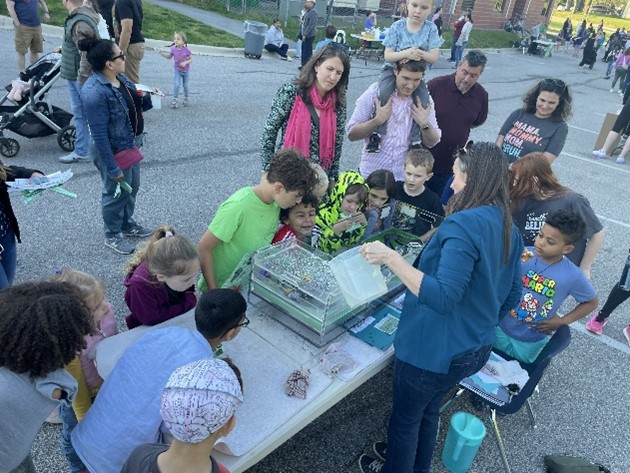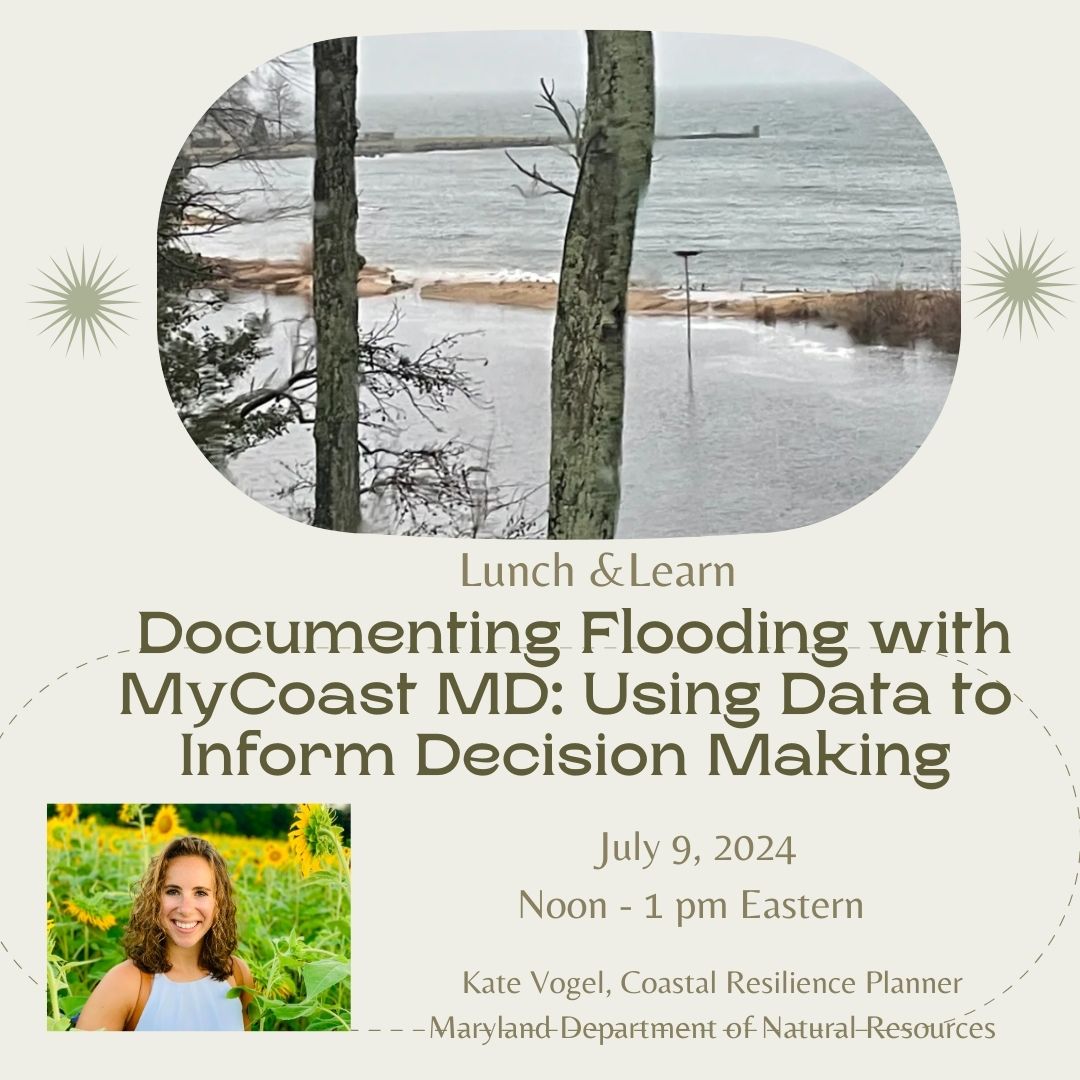In 2024, MAFSM continued its youth outreach efforts using the 3D floodplain simulation model, a tool designed to educate youth about floodplain management and the impacts of human activity on watersheds. These models are particularly effective in showing how development and environmental changes affect floodplains. The hands-on demonstrations have been integral in teaching students, especially in flood-prone areas, about the importance of flood risk awareness and prevention strategies. Two demos that occurred in 2023 included:
The Phelps Luck Elementary Science Night in Columbia, MD in April of 2024, included an evening of outdoor science experiments and demonstrations. Community organizations provided information about their work and how they are supporting many efforts throughout Maryland.
In May of 2024, the MAFSM model was used at Bowie State University to facilitate conversations with Prince George’s County High School students about floodplains and water quality at the Student Environmental Alliance Summit. The Prince George’s County Clean Water Partnership supported the summit as part of their Treating and Teaching Program.
MAFSM has used the model for decades and it continues to be a foundational element of their youth education work.
The Maryland Association of Floodplain and Stormwater Managers hosted a lunch and Learn featuring MD DNR’s Kate Vogel on July 9th, 2024. Kate spoke about the My Coast MD tool and how the data collected can inform decision making.
Kate is a Coastal Resilience Planner for the Maryland Department of Natural Resources to advance community capacity to understand, plan for and advance preparedness related to flood hazards including nuisance flooding and sea level change. She promotes resiliency planning at a community and regional scale and delivers technical assistance for coastal management projects. Kate manages the MyCoast Maryland application and website which are used to document flooding in the state.









